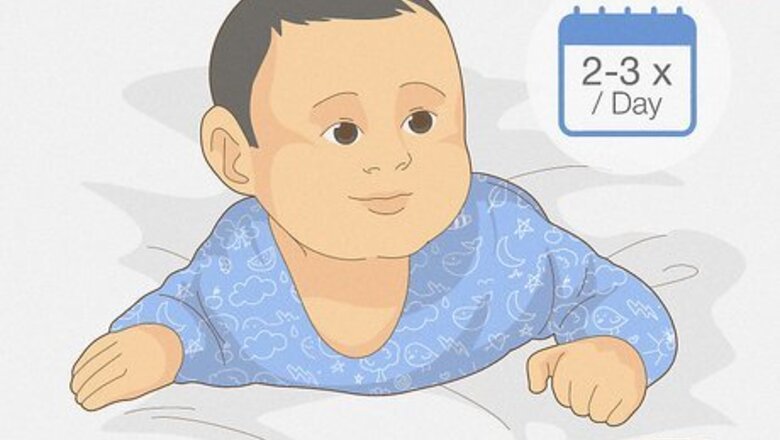
views
- Give your baby 3 to 5 minutes of tummy time 2 to 3 times a day. Spread out a blanket and use a rolled-up towel to prop their arms up slightly.
- Sit with your baby on a blanket or between your legs and encourage them to reach for toys that are placed just out of reach on either side of them.
- As your baby begins to move around, put them on their hands and knees and place your leg or a rolled-up towel under their tummy to support them.
Encouraging Your Baby to Crawl

Give your baby 3 to 5 minutes of tummy time 2 to 3 times a day. By playing on their bellies, babies can develop the muscles in their arms, legs, shoulders, back, torso, and neck that help them learn how to crawl. When you’re baby reaches 2 months old, increase their time to 15 to 30 minutes of tummy time daily. Most babies can start tummy time sessions a day or two after they’re born, but the best time to start is when your child can pick their head up on their own. Spread out a blanket on a clear area of the floor and place a rolled-up towel or blanket under your baby’s arms to help them prop themselves up sightly. Put a toy or two within the baby’s reach to encourage them to interact with their surroundings and let them experiment with exploring on their own. Supervise tummy time sessions at all times and try to have someone you trust sit in front of the baby to encourage bonding. When you put your baby down to bed, place them on their back.

Place your baby's favorite toy just out of their reach. Sit with your baby in between your legs or on a blanket and gently encourage them to reach for toys that are just out of reach on either side of their body. This can not only motivate them to move around, but improve their motor development. Encourage your baby to look up and strengthen their back, neck, and shoulder muscles by placing toys slightly above their line of sight. Leaning, reaching, and twisting to the side can also help your baby get used to the feeling of rotating and putting light pressure on their arms and shoulders. As your child gets more confident on their hands or knees, try encouraging them to reach for toys that might roll away when touched, like a soft ball, to get them to start moving forward. Optionally, hold a mirror just out of reach of your baby and encourage them to move forward to get a closer look.
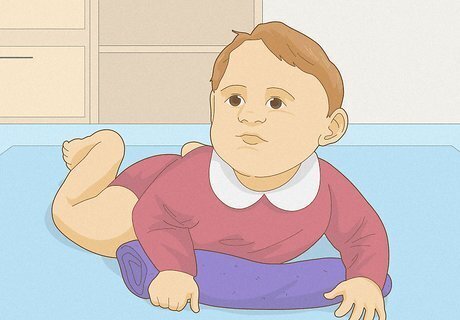
Support your baby’s tummy with your leg or a rolled-up towel. If your baby doesn’t crawl with their hands and knees yet, you can put them in the position, support their belly with your leg or a rolled-up towel or blanket, and have them reach for toys to play with. This can get them used to the crawling position and gain strength in their arms, neck, back, and shoulders. As your baby’s muscles get stronger, you might be able to remove your leg or towel and use your hands to gently support their hips or tummy while they move.
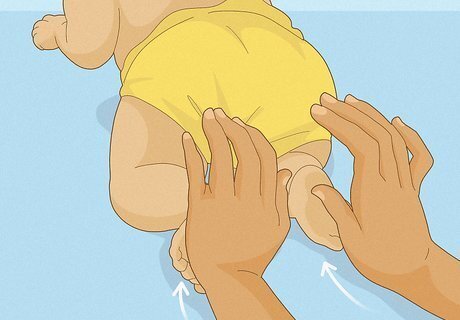
Use your hands to support your baby's feet when they're on all fours. When your baby is in a crawling position, put the palms of your hands behind your child’s feet to stabilize them and give them something to “push off” of when they’re moving or reaching for something. Try letting your baby go barefoot during playtime so they can use the muscles in their feet and toes to grip the floor. If you have hardwood, tile, or linoleum floors, place a soft blanket down or allow your baby to move around without pants to give them enough traction to move forward.
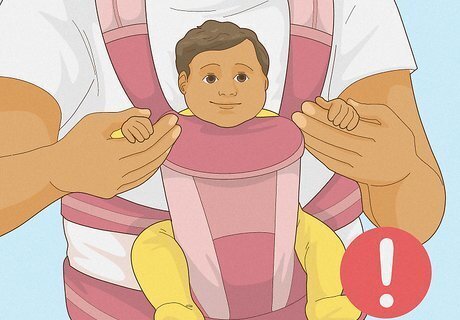
Limit the time your baby spends in walkers, car seats, or carriers. Although walkers can encourage babies to move around, if they spend a lot of time in them they might get used to standing on their tiptoes, which can delay walking. Spending a lot of time in car seats or carriers can also delay your baby’s ability to sit up and look around on their own. Walkers can also be potentially dangerous and may cause injury. If you do use a walker, bouncer, or seat, try to limit your baby’s time in it to no more than 20 minutes at a time. The more movement your baby can do without getting tired, the better. Encourage your baby to move as much as you can, so they’ll be ready to walk when the time comes.
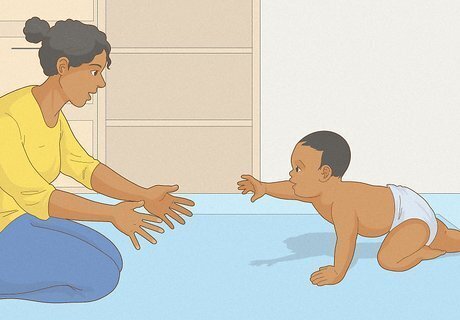
Entice your baby to move toward you. While your baby is in tummy time or when they’re starting to move or shuffle around on their own, try to stand or sit away from them and encourage them to crawl towards you or reach to grab something from you. Alternatively, crawl alongside your baby to encourage them to mirror you. You might move towards the same toy or another trusted person to encourage them to crawl forward.
When do babies start crawling?
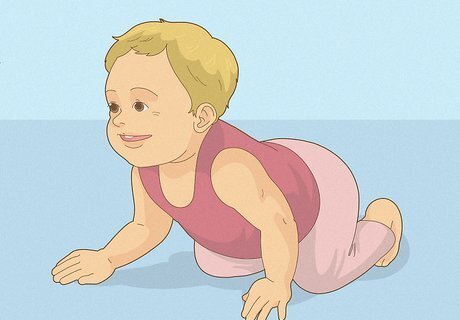
The average age for a baby to crawl is between 7 to 12 months. However, some babies crawl earlier or later. If you notice your baby is using only one side of their body to crawl or you’re concerned about your child’s developmental progress, contact their health provider. Babies who are slow to crawl might just be busy working on other skills or they may prefer to sit and explore the world by sight or touch. Like adults, babies have their own unique preferences and interests. If your child is bigger or heavier than is typical for their age, they might crawl later because it can be more challenging to push up and move that extra body weight. As long as your baby is moving both their legs and arms equally and has strong coordination, there’s probably no need to worry. Some research shows that up to 15% of babies skip the crawling stage altogether and go straight to walking.
Signs Your Baby is Ready to Crawl
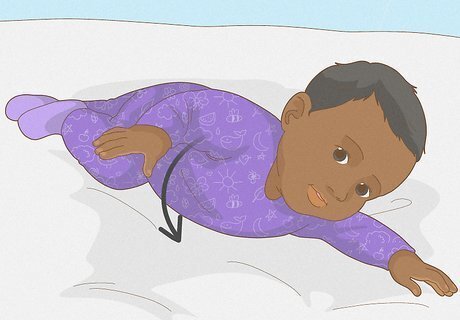
Your baby may be ready to crawl if they want to sit up and roll over. Every baby is different and follows their own timeline, but the most common sign your baby is ready to move is when they begin to sit up and roll over. They might even get up on their hands and knees and rock back and forth, wiggle on their tummy, or scoot around on their bottom. If your baby can’t support their head or sit up on their own, they might not be ready to crawl around on all-fours yet. Try not to force your baby to crawl before they’re ready. Every baby develops at their own pace and pushing them to learn a skill they aren’t ready for might delay their learning.
Baby Crawling Styles
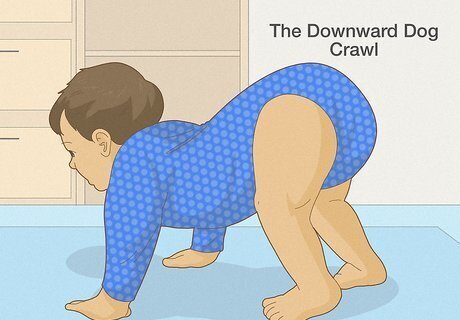
There are many different ways that babies crawl. As babies figure out how to move with their arms and legs, they might move in ways that differ from other babies. Your baby is just learning what works for them, and that’s totally fine. Some of the most common crawling styles for babies include: The Classic Crawl: This is the traditional way babies crawl, where they alternate using one hand on one side of their body and one knee on the other to move forward. The Reverse Crawl: Your baby might scoot or crawl backward, pushing with their feet, hands, or bottom to get to where they’d like to go. The Downward Dog: This one is like the classic crawl, but your baby keeps their knees off the ground and moves with their hands and feet. The Crab Walk: Your baby might sit upright, bend one knee, and extend the opposite leg to scoot their butt forward. The Commando: Your baby might lie flat on their tummy and drag themselves forward using their arms. The Rolly Polly: Your baby rolls to get to where they need to go. The Walker: Your baby skips the crawling stage altogether and goes straight to walking.
Childproofing Your Home for Crawling
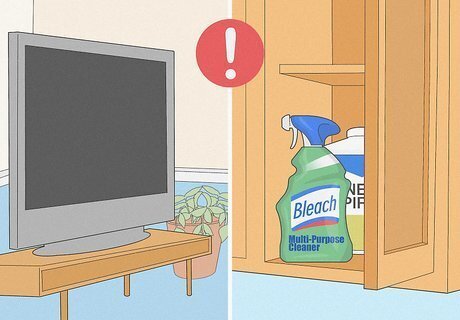
Remove any potential hazards to keep your baby safe. Once your baby starts moving, rolling, or crawling around on their own, make sure your baby has a safe, supervised space to explore. Babyproofing your home can help reduce injuries as your baby learns new skills. Here are a few recommendations to get started: Tie up any hanging electrical cords or move furniture to hide them. Use outlet covers on any open outlets. Install baby gates on the top and bottom of all staircases. Place locks on toilet seats. Move any houseplants or fragile knick-knacks out of the baby’s reach. Install cabinet and drawer locks. Place corner guards on any short tables. Anchor your dressers, bookshelves, TV stands, and other large furniture with wall brackets. Keep window blind cords tucked somewhere up high. Use door knob covers and appliance locks to keep babies from opening doors. Set up a fireplace gate to protect your child from the fireplace. Store medicines, cleaning products, and other potential poisons out of your baby’s reach. Use a stove guard to protect your baby’s hands as they learn to walk.
















Comments
0 comment